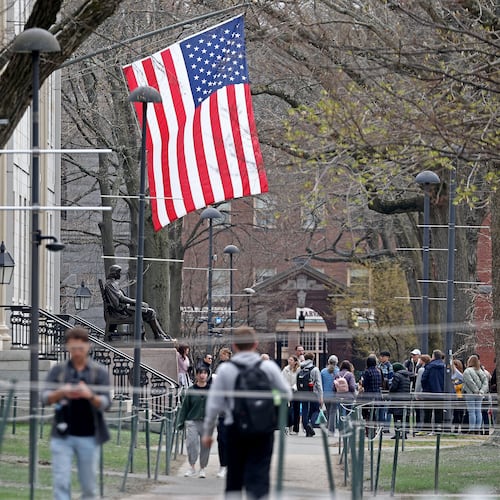Most people probably don’t think of one-room schoolhouses as the future. Maybe they should.
That pre-Industrial Revolution concept is at the heart of a fast-growing school model. Seven years ago, oil industry entrepreneur Jeff Sandefer and his wife Laura started a private elementary school in Austin, Texas, with the goal of keeping their own kids from being lectured eight hours a day.
Today, Acton Academy has five campuses in Austin, plus others open or being opened in Houston, San Antonio, Chicago, Southern California, Wisconsin and Washington, D.C. There’s even a campus in Guatemala City, and another planned for Honduras. One is slated to open in metro Atlanta next fall.
“We receive about five applications a day” to start new schools, said Matt Clayton, whose title is lead evangelist for the Acton Academy network.
Each Acton school puts students in one “studio” apiece for elementary, middle and high schools, with 10 to 35 kids covering four grade levels together in a single room.
“Jeff and Laura didn’t start with that assumption” about age groups, Clayton explained in a recent phone interview. “They said, what’s the most natural way to learn? And when you think about it, when have you ever had a workplace where everyone around you was within six months of your age, one way or the other?”
Rather than advancing year by year, Acton students master a progression of skills — a move-on-when-ready approach Georgia’s Education Reform Commission has also been investigating.
“It’s just a critical concept,” Clayton continued. “Otherwise, everyone is robbed of the opportunity to really solidify (their learning). Math is a good example. Everyone knows the feeling of trying to solve something from geometry, and you don’t know something from algebra.”
Older students complement their studies with apprenticeships. They research fields that interest them, identify companies and line up interviews. Unlike similar programs at other schools, Acton doesn’t pre-arrange for companies to hire them.
“They’re doing apprenticeships everywhere from auto mechanics to hospitals to bakeries to law firms to designers,” Clayton said. “And by the time they’re 16, 17 years old, they’ve already applied for and been offered a whole bunch of jobs, five or more, and they have letters of recommendation from each of those five employers to recommend them to any job they want to do next. And it just really changes the game for how a (student) looks at the future.”
Tuition at Acton campuses varies. It’s as expensive as $13,450 in Chicago and $19,500 in Washington. But it’s as low as $3,250 (part-time) at one Austin campus, or $4,500 (full-time) at one Houston campus. That’s close to the amount envisioned by the Education Savings Account proposed in Georgia, although tuition at the first campus here could start closer to $8,500 and then fall over time, said Kelley Gary, who is leading its launch.
But, Gary said, an ESA would speed up the timeline for adding metro Atlanta campuses — he thinks this area could support 5 to 10 now, and build to 20 to 25 over time — as well as the number of families who could afford the school. That’s exactly what school-choice advocates mean when we say more, and more affordable, options will materialize if lawmakers expand choice through tools like an ESA.
About the Author
Keep Reading
The Latest
Featured


